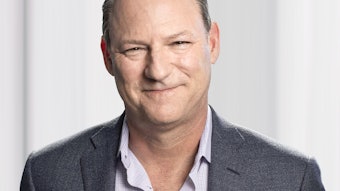
Elisabeth Dufton PhD Student at University of Leeds (2014-present) Elisabeth Dufton first embarked on the path of the cosmetic and toiletries industry by joining the BSc Cosmetic Science course at London College of Fashion in 2006. In 2008-09, she took up an industrial placement opportunity within the course program and worked at Henkel GmbH research headquarters in Düsseldorf, Germany. There, she was based in the microbiological department and specialized in cosmetic preservation, where she tested new systems to provide a natural preservation system.
After graduating with First Class Honors in 2010, she moved to Leeds and began work as a research assistant at the University of Leeds (UoL) in natural product formulation R&D, and then became the formulation scientist for the UoL spin-off company Keracol Ltd. In 2013, she furthered her education by completing a master’s in science by completing research at UoL, graduating in 2014 with distinction. She has since been working on a doctorate at UoL, with research in the field of skin care formulation and skin permeation.
C&T: Who are/were your mentors?
ED: My formal training in cosmetic science is thanks to the pioneering course at the London College of Fashion and the world experts that teach there. I found the course both demanding and stimulating. By graduation, I was determined to continue in the science at a post-graduate level and was fortunate to discover another expert team at the University of Leeds that wanted formulation skills.
I joined them first as a research assistant, then progressed in my post-graduate education, bringing the discipline of cosmetic science to the UoL. I count myself as very lucky to have been able to experience training and research with the leading cosmetic teams in the UK. I find the Society of Cosmetic Scientists a constant support, providing an excellent basis for inspiration and guidance.
Delivering Health, Actives and Creativity
C&T: What interests do you have, or current work are you conducting, that relates to cosmetics?
ED: I am interested in many areas of the cosmetic world, from the science to the marketing; but also particularly on the effects that cosmetics can have on individuals—how they can impact positively on their mental and physical health.
My current research work tries to encompass both the science and marketing side. The backbone is in elaborating the scientific understanding of skin care formulations, using scientific rationale to investigate concepts to improve the skin delivery of actives—particularly naturally occurring antioxidants. In parallel, I keep in contact with the potential end-consumer and evaluate what matters to them about the formulation, and use their feedback in the formulation design strategy.
C&T: What do you like most about your work? What do you like least?
ED: There are quite a lot of things I like about my work—the creativity, application of multi-disciplinary subjects, continual learning progression and working with others, to name but a few. I get to investigate past and current research in formulation science and skin permeation, test it and learn from it, but also develop my own unique approach to answer questions. Sometimes I’m successful and a few times, I’m not. But that’s what keeps me on my toes and moving forward in R&D.
On the other hand, outside of the lab, I also find I really enjoy conversing with consumers about skin care products. For example, discovering what in particular about a formulation pleases or displeases them, or why they feel a product works for say, anti-aging, compared to one that is in their terms “just a moisturizer.”
There is not too much I dislike about my work as when a problem arises, I see the only way around it is to solve it. Although when experiments or concepts do not go as planned, it can be rather frustrating.
New and Simple Can Be Good
C&T: What do you find most challenging about your work?
ED: In saying that creativity and continual learning are things I like, these are also challenging as the cosmetic research field is constantly moving with new or developed concepts for skin delivery. Trying to get a clear and concise focus on recent developments takes up a lot of time. Another challenge I find in R&D and academia is being brave, to stick with a new idea and hold it up against critics. Just because something is new doesn’t always mean it is wrong.
C&T: Give an example of a problem you solved that has application in the cosmetics industry.
ED: Increasingly, there are more and more ingredients in a cosmetic formulation, which makes it difficult—particularly for research into skin delivery—to establish interactions and enhance the function of that product. There are benefits to stripping the formulation down; lower cost, lower risk of adverse skin reactions, sustainability and perhaps better performance. However, the problem at the end is always making the formulation acceptable with the consumer, and this is where many of those added ingredients are needed.
My particular approach to formulation design is to keep it simple. I have found that if the active(s) in a formulation are thoroughly understood in terms of their chemistry, stability, interactions with other chemicals and biological membranes, they can be utilized as multifunctional ingredients. In new product development for Keracol Ltd. and in my research projects, I was able to use this approach to successfully develop a natural based formulation that was functional, stable, safe and consumer-acceptable with only four ingredients—including the fragrance. This approach would be highly beneficial in making cosmetic products more sustainable.
Blurring the Lines
C&T: What about the cosmetics and personal care products industries excites you? How would you like your role in the industry to evolve?
ED: I find it exciting that the cosmetic and personal care industry itself can span and mingle with other industries: medicine, engineering, computer technology, environment, food, etc., as it provides many platforms to launch new product concepts and keep the industry moving forward. The expanding academic interest in cosmetic science is particularly exciting, too, as it is a way for young scientists to become involved in the sciences early on and bring fresh eyes and enthusiasm to the industry. Much of cosmetics R&D is conducted within the large companies and kept hidden, so more academic-based projects are allowing for open access research.
In addition, the positive impact the cosmetic and personal care industry can have on the end consumer’s mental and physical health is an important, powerful influence, which I feel has great application to improving society. Our industry ultimately makes products that we use to look good and feel better, to enhance our confidence, and to maintain healthy skin. By improving people’s health, we can help to improve society and well-being—both in the developed and developing worlds.
I always envision my role to be connected with understanding how these products work, improving their function and thus, providing better benefits to the end user, particularly for helping impaired skin barriers and the skin delivery of actives.
C&T: How is the industry helping to make this evolution happen? How could assistance improve?
ED: The industry is becoming more diverse, with other subject areas being teamed together with cosmetic scientists; i.e., bringing on board biologists, chemists, pharmacists, engineers and business experts to produce forward-thinking R&D and formulation science. This is allowing more involvement with research at universities and the dissemination of research, which ultimately leads to progress in skin care formulations. Platforms that help this is are the numerous industry based conferences, exhibitions and networking events where ideas and new research can be shared. Improving upon this would be to create more courses at universities that are cosmetic science specific.
Genetic Targets, Sustainability and Skin Penetration
C&T: What areas or technologies do you think are untapped for cosmetics R&D?
ED: Along the lines of personalized skin care, which is becoming an increasing presence in R&D, I would like to see cosmetics tap more into genetic profiling to develop skin care formulations that can actually compensate for genetic disadvantages in skin disease or skin aging. This, I feel, would give increased understanding and definition to skin types; not just oily/dry/sensitive, but specific to the individual and thus provide targeted benefits.
I think there is also scope for developing “smart” products based on nature-like bio-transformations; e.g., products that, once applied to the skin or hair, can actually adapt to the changing outside environment, say providing increased sun protection if the UV radiation increases, or in decorative cosmetics, change color by environmental/body triggers.
C&T: How do you envision the cosmetics/personal care industry of the future?
ED: I see the industry tightening on its scientific rigor for product development for health regulations and claims support as, particularly with skin care, products lean more toward the medicinal side as drug-like transformations of the skin for visible improvements are sought. With these “cosmeceutical” type products, R&D will likely cost more and take longer. That is why I feel increasing the research output of formulation science and how cosmetic ingredients permeate through/interact with the skin is key for efficient success in the future. This would also help to provide evidence to consumers as there is increasing demand for results and proof regarding the products they use.
Hopefully, in the future, the industry will produce cosmetic and personal care products that are more sustainable over the whole production; especially with raw material sourcing, packaging, formulation design, manufacturing and distribution. As a lucrative and influential industry, a green approach can have a profound and beneficial impact to the environment and society.










